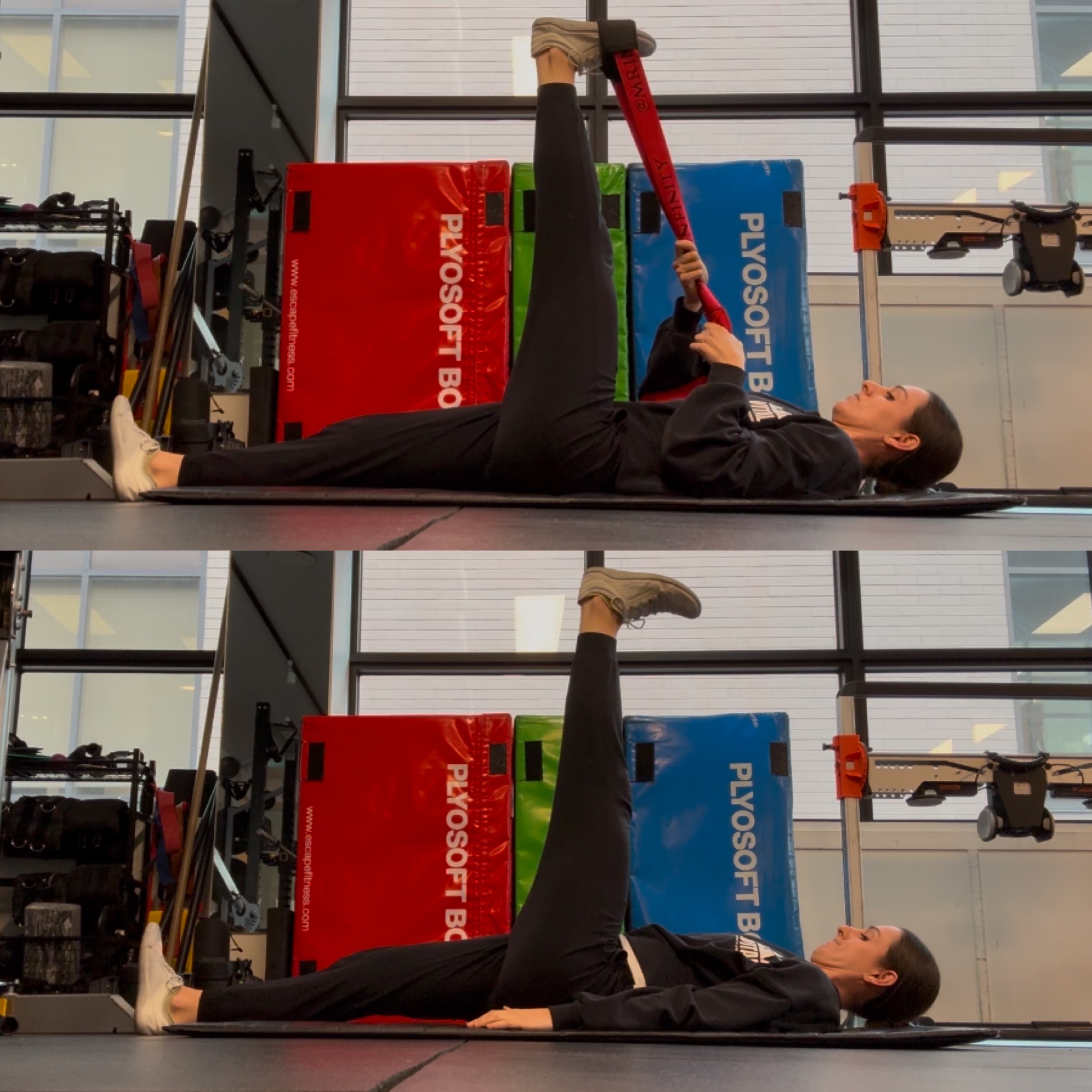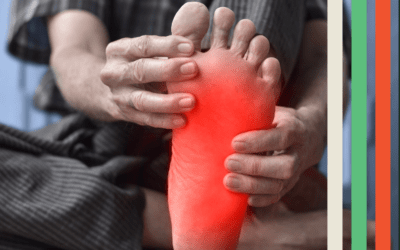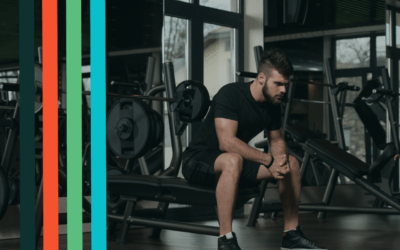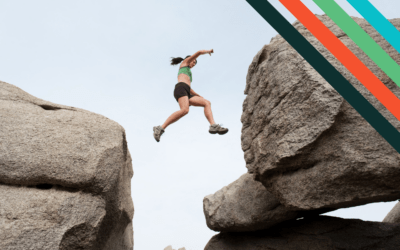Quick Navigation
- Introduction
- What is Hip Mobility?
- How Hip Mobility Affects Athletic Performance
- How Poor Hip Mobility Increases Injury Risk
- Top Hip Mobility Exercises for Athletes
- Should I Stretch?
- Is Mobility and Dynamic Stretching the Same Thing?
- Build Stronger, More Mobile Hips with Hip Foundations
- Conclusion
- About The Author
- References
Introduction
Hip mobility is a game-changer for athletic performance. Whether you’re sprinting down the track, powering through a heavy squat, or making sharp cuts on the field, optimal hip mobility can be the difference between good and elite performance.
Hip mobility isn’t just about stretching—it’s about strength, control, and the ability to move your hip joint through its full range of motion under load. This combination of flexibility and strength allows athletes to generate more power, improve efficiency, and stay injury-free, giving you the edge in training and competition. If tight hips are limiting your stride length, explosive power, or stability, it’s time to address what’s holding you back.
After reading this post, if you still need help, you can contact us, or learn how our Hip Foundations program can help.
What is Hip Mobility?
Hip mobility means being able to move your hips through their full range of motion with control. Think about lifting your knee as high as you can while standing—mobility lets you do that without stiffness or discomfort. It’s different from flexibility, which is passive and doesn’t build strength.
Below, you’ll see a demo showcasing the differences between the two.
There’s usually a gap between the range of motion we can passively access and what we can actively control. In the screenshot below, my mobility (pulling my own leg up) is slightly better than my flexibility (using a strap to assist the stretch).
Most people have more flexibility than mobility, but in this case, warming up with the passive stretch may have helped me access a greater range in the active drill.

If you take nothing else from this blog, remember this: In the image above, it’s my hip flexors and quads actively pulling my hamstring into a deeper stretch—not passive force, but muscular activation. This activation not only strengthens the hip flexors and quads (especially when progressively loaded) but also signals the hamstrings to relax and lengthen over time. This is why strength training is the real key to improving flexibility—it builds usable range, while passive stretching alone won’t make you stronger or more mobile.
How Hip Mobility Affects Athletic Performance
Studies have shown that poor hip mobility can reduce athletic performance by limiting stride length, power output, and joint stability (Morton et al., 2011).
Why would lack of mobility (even in the case of good flexibility) impair things like stride length, power output and joint stability? Because mobility is about control and strength through a joint’s full range of motion—not just how far a joint can move.
Here’s how a lack of mobility can reduce athletic performance:
- Flexibility without control: Flexibility allows a muscle to stretch passively, but if the surrounding muscles and tissues lack strength or control, you can’t actively use that range of motion. For example, you might be able to lift your leg high in a passive stretch, but during a run, the lack of hip mobility prevents you from achieving a full stride.
- Restricted joint range: Mobility limitations in the hips or ankles can prevent optimal extension or flexion during running, shortening your stride and making your movements less efficient.
- Inefficient force transfer: Power generation relies on the ability to move explosively through the entire range of motion. For example, when sprinting or jumping, the hips, knees, and ankles need to move smoothly and strongly together. Lack of mobility disrupts this synchronization, leading to “energy leaks” where power isn’t fully utilized.
- Compensation patterns: If a joint lacks mobility, other areas (e.g., the lower back or knees) compensate, reducing the efficiency and force of your movement. This limits how much power you can produce in activities like jumping, sprinting, or weightlifting.
- Lack of control in the range of motion: Mobility combines flexibility with strength and stability. If you can stretch far but can’t control that range under load or dynamic movement, joints that you weren’t intending to move, move more. For example, if you have a very flexible spine, while hip thrusting you might arch and extend the back at the top of the motion due to your excessive range, placing stress on the muscles of the back instead of the hip – which wasn’t your intention.
- Over-reliance on passive structures: Without mobility, the body relies on ligaments and tendons (passive structures) to stabilize the joint, instead of using active muscle engagement. This reduces stability and increases wear and tear on the joint over time.
Studies on runners and athletes show that restricted hip or ankle mobility leads to shortened strides, higher energy expenditure, and reduced performance (Le Mouel & Brette, 2017).
How Poor Hip Mobility Increases Injury Risk
Aside from reduced athletic performance, poor hip mobility increases your risk of injuries.
When your hips can’t move well, other parts of your body—like your knees and lower back—take the hit. This often leads to overuse injuries and poor movement patterns. For example, tight hip flexors often force the lower back or knees to compensate, which can create pain or instability (Le Mouel & Brette, 2017).
Common issues linked to poor hip mobility include:
- Strained hip flexors and tight hamstrings
- Chronic lower back pain
- Knee instability and reduced joint control
Colin’s Story: This runner started working on improving hip mobility and strength with our Hip Foundations program and found the unexpected bonus of getting out of pain.

Research has shown that active mobility work, which combines strength and flexibility, can be even more effective than static stretching alone (Morton et al., 2011).
Top Hip Mobility Exercises for Athletes
Here are eight effective exercises to start improving your hip mobility today:
- Lean Back Lunge: improves mobility of the quads through hip extension. Think about maintaining some engagement through the low back and obtaining the length evenly through the front side of the torso, hip, and knee. This improves hip extension for the upright position of sprinting.
- Two Bench Abduction: improves mobility of the obliques and glute med (side hip) through spinal side flexion with assistance from gravity. This improves range of motion required for extreme side cutting.
- Pancake and Loaded Pancake: Improves the mobility of the hamstrings, groin, and low back by loading and controlling the end range of the position. This improves low back and hamstring strength to prevent injuries or pain of that area in-season.
- Kick: improves mobility of the adductors (groin) while strengthening the glute med and abductor muscles of the hip. This helps in sports that require lots of lateral range in the hips or for runners who require lots of glute med strength.
- Stiff Leg Deadlift: improves mobility of the hips and hamstrings by loading the end range of hip flexion with weight and with assistance from gravity. Helps strengthen the hamstrings under length, which is the most common way to injure the hamstrings when sprinting.
Should I Stretch?
While static stretching (holding a position) helps improve flexibility, dynamic stretching (moving while stretching) better prepares your body for sports and reduces injury risk (Søgaard & Sjogaard, 2017).
Stretching can play a role in athletic performance, but its importance depends on your goals and current training habits.
Static stretching (holding a position) is great for improving flexibility, but it doesn’t directly enhance strength or control. On the other hand, dynamic stretching (moving while stretching) is more effective for preparing your body for sports. It increases blood flow, activates muscles, and reduces injury risk before training or competition (Søgaard & Sjogaard, 2017).
For most athletes who are already incorporating dynamic warm ups and moving through full ranges of motion in the weight room, we often don’t prescribe extra stretching. That’s because the controlled, loaded movements in strength training also improve flexibility and mobility. For example, exercises like deep squats or Bulgarian split squats inherently train your muscles through their full range, building both strength and mobility simultaneously.
However, there are exceptions where passive stretching can be helpful. If an athlete’s flexibility is so limited that they struggle to access a full range of motion under load (e.g., a runner with extremely tight hip flexors), we may recommend targeted static stretching. This allows them to gradually improve their range while continuing to build strength in the gym. Passive stretching is also an easy and accessible tool for athletes to do at home as “homework” between sessions.
Bottom line: Stretching isn’t always necessary for athletes already training effectively through full ranges of motion. However, it can be useful in specific cases where flexibility is limiting performance or movement quality. For most, a mix of dynamic warm-ups and strength training provides the best bang for your buck.
Is Mobility and Dynamic Stretching the Same Thing?
Static stretching (holding a position) helps improve flexibility by lengthening muscles without movement. It’s commonly used after workouts or during cooldowns. You’ll often see dancers and gymnasts holding stretches for minutes on end or being forced into deeper ranges by their teammates or coaches.
Dynamic stretching (moving while stretching) involves controlled movements like lunges, leg swings, or hip circles that take a joint through its range of motion. Research suggests dynamic stretching better prepares the body for activity because it activates muscles and improves blood flow (Morton et al., 2011).
So, does dynamic stretching count as mobility work?
No, not entirely. Dynamic stretching prepares your body for movement but doesn’t build long-term mobility. True mobility training involves both flexibility and strength control. Think deep lunges under load, controlled rotations, and exercises where you actively use your range of motion.
Here’s how they differ and where they overlap:

Sarah’s Story: Sarah, a competitive triathlete, found that working on her hip mobility not only improved her running efficiency but also enhanced her swim kick, making her a stronger, more coordinated athlete.

Build Stronger, More Mobile Hips with Hip Foundations
If you’re ready to get serious about improving your hip mobility, our Hip Foundations program is designed to improve hip mobility and strength. With our program, you can:
- Reduce injury risk and movement restrictions.
- Enhance power, speed, and movement efficiency.
- Build strength and stability with expert-designed progressions.
Backed by expert guidance and proven results, Hip Foundations takes the guesswork out of your mobility work.
Take it from Andrew’s story. Andrew, a powerlifter, struggled with hip pain during squats and running. After starting the Hip Foundations program, his pain significantly reduced, allowing him to break personal lifting records and return to soccer pain-free.

Conclusion
Mobility is a cornerstone of athletic performance. Whether you’re chasing faster sprints, deeper squats, or more explosive power, addressing hip mobility with the right strategies can unlock new levels of performance while keeping you injury-free.
Mobility work goes beyond just stretching—it’s about building strength, control, and efficiency in your movements. For athletes looking to gain an edge, investing in targeted hip mobility training can make the difference between good and great performance.

More About The Author
Carla Robbins, Owner of Vital Strength and Physiology Inc
Carla’s journey into the world of endurance training, strength and conditioning, and exercise physiology began with her Undergraduate Degree in Exercise Physiology at the University of Calgary and continued into her graduation with a Master’s in Exercise Physiology in 2016. Between working for the Canadian Sports Institute to the creation of her company Vital Strength and Physiology Inc, Carla is driven by a desire to find better ways to address complex cases in professional and everyday athletes and individuals.
References
Le Mouel, C., & Brette, R. (2017). Mobility as the purpose of postural control. Frontiers in Computational Neuroscience, 11, 67. https://doi.org/10.3389/fncom.2017.00067
Morton, S. K., Whitehead, J. R., Brinkert, R. H., & Caine, D. J. (2011). Resistance training vs. static stretching: Effects on flexibility and strength. Journal of Strength and Conditioning Research, 25(12), 3391-3398.
Søgaard, K., & Sjogaard, G. (2017). Physical activity as cause and cure of muscular pain: Evidence of underlying mechanisms. Exercise and Sport Sciences Reviews, 45(3), 136-145.
Shitara, H., Tajika, T., Kuboi, T., Ichinose, T., Sasaki, T., Hamano, N., Kamiyama, M., Yamamoto, A., Kobayashi, T., Takagishi, K., & Chikuda, H. (2022). Shoulder stretching versus shoulder muscle strength training for the prevention of baseball-related arm injuries: A randomized, active-controlled, open-label, non-inferiority study. Scientific Reports, 12(22118). https://doi.org/10.1038/s41598-022-26682-1
Quick Navigation
- Introduction
- What is Hip Mobility?
- How Hip Mobility Affects Athletic Performance
- How Poor Hip Mobility Increases Injury Risk
- Top Hip Mobility Exercises for Athletes
- Should I Stretch?
- Is Mobility and Dynamic Stretching the Same Thing?
- Build Stronger, More Mobile Hips with Hip Foundations
- Conclusion
- About The Author
- References



